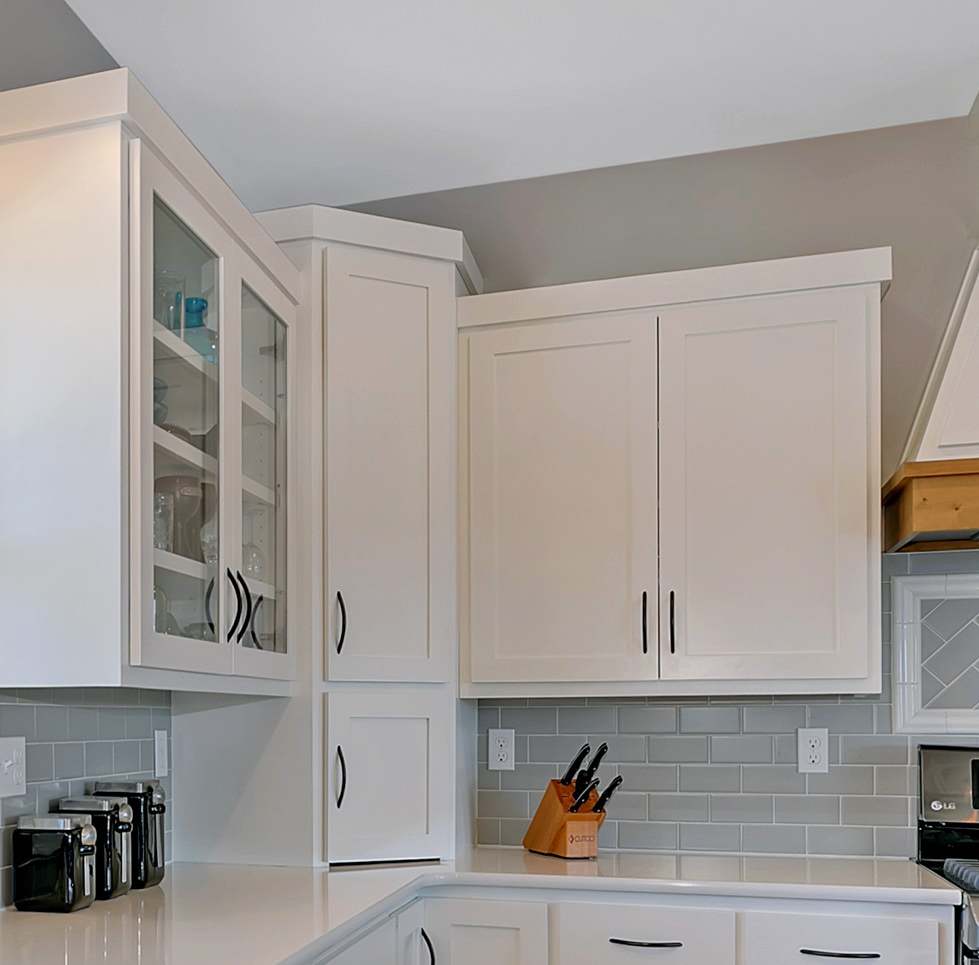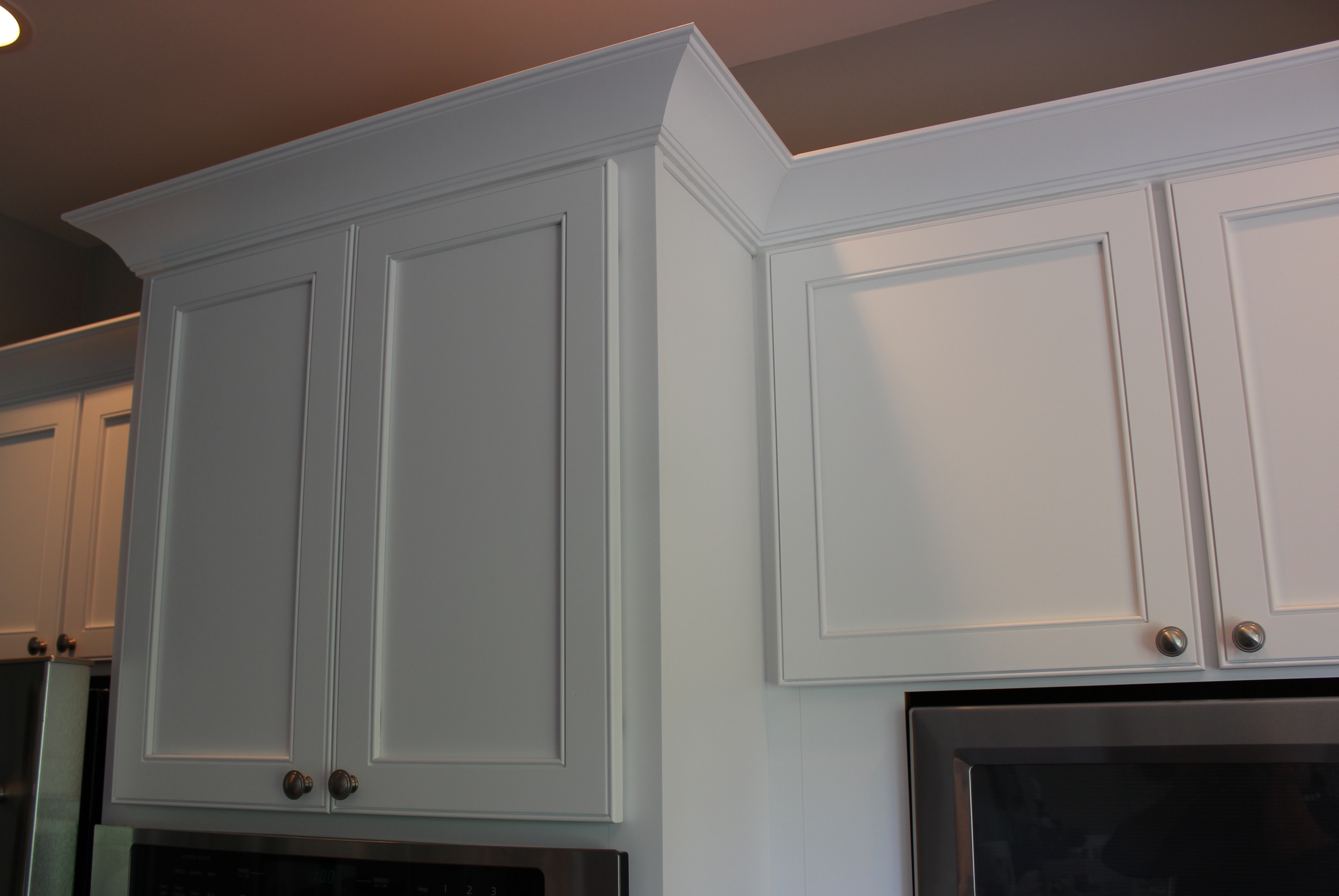Understanding Modern Cabinet Crown Moulding

Cabinet crown moulding has evolved significantly over time, reflecting changing architectural styles and design preferences. From the ornate and intricate designs of the past to the clean lines and minimalist aesthetics of modern design, crown moulding has adapted to meet the demands of contemporary interiors.
Evolution of Cabinet Crown Moulding
The evolution of cabinet crown moulding reflects a shift from traditional, ornate styles to more modern, minimalist designs. Traditional crown moulding often featured intricate carvings, elaborate details, and a focus on creating visual interest and grandeur. In contrast, modern crown moulding prioritizes clean lines, simplicity, and a seamless integration with the overall design scheme.
Design Elements of Traditional and Modern Crown Moulding
Traditional crown moulding typically incorporates elements such as:
- Intricate carvings and details
- Heavy profiles with multiple layers and curves
- Ornamental flourishes and embellishments
- A focus on creating visual interest and grandeur
Modern crown moulding, on the other hand, emphasizes:
- Clean lines and simple profiles
- Minimalist details and a focus on functionality
- A seamless integration with the overall design scheme
Materials Used for Modern Cabinet Crown Moulding
Modern cabinet crown moulding utilizes a variety of materials to achieve different aesthetic and functional qualities. Popular materials include:
- Wood: Wood remains a popular choice for modern crown moulding, offering a natural and timeless appeal. Popular wood species include maple, cherry, walnut, and oak, each with its unique grain pattern and color.
- Metal: Metal crown moulding provides a sleek and contemporary look. Aluminum and stainless steel are common choices, offering durability and resistance to scratches and dents. Metal crown moulding can be painted or left in its natural finish, creating a variety of aesthetic possibilities.
- Composite Materials: Composite materials, such as MDF (Medium Density Fiberboard) and PVC (Polyvinyl Chloride), offer a cost-effective and versatile alternative to traditional wood. These materials are often used to create intricate profiles and designs, mimicking the look of wood while providing greater durability and resistance to moisture and warping.
Designing a Modern Cabinet Crown Moulding Profile
A modern cabinet crown moulding profile should prioritize clean lines, simple shapes, and a minimalist aesthetic.
A well-designed modern crown moulding should enhance the overall design of the cabinetry without overpowering the other elements in the space.
Here are some key design principles to consider:
- Simplicity: Avoid overly complex or ornate profiles. Opt for clean lines and simple shapes that complement the modern aesthetic.
- Proportion: The profile should be proportionate to the size and scale of the cabinetry. Avoid using overly large or small profiles that might appear out of place.
- Material: Choose a material that complements the overall design scheme. Wood, metal, and composite materials can all be used to create a modern look, depending on the desired aesthetic.
- Finish: The finish should be consistent with the overall design of the cabinetry. A matte or satin finish can provide a subtle and understated look, while a high-gloss finish can add a touch of sophistication.
Modern Cabinet Crown Moulding Styles

Modern cabinet crown moulding styles offer a clean and contemporary aesthetic, enhancing the overall design of your kitchen or bathroom cabinets. These styles often prioritize simplicity, geometric shapes, and subtle details, creating a sophisticated and timeless look.
Minimalist Cabinet Crown Moulding
Minimalist cabinet crown moulding emphasizes simplicity and clean lines. It typically features a narrow profile with minimal ornamentation.
- The focus is on creating a seamless transition between the cabinets and the ceiling, without drawing attention to itself.
- Minimalist crown moulding often features a simple, flat profile with a subtle edge detail.
- This style is ideal for contemporary kitchens and bathrooms where clean lines and a streamlined aesthetic are desired.
Contemporary Cabinet Crown Moulding
Contemporary cabinet crown moulding incorporates modern design elements while maintaining a sense of sophistication.
- It often features geometric shapes, such as squares, rectangles, or triangles, creating a visually interesting and dynamic effect.
- Contemporary crown moulding may incorporate subtle details, like a slight bevel or a recessed panel, adding depth and dimension.
- Materials like stainless steel, aluminum, or painted wood are often used to create a sleek and modern look.
Industrial Cabinet Crown Moulding
Industrial cabinet crown moulding embraces a raw and edgy aesthetic, reflecting the industrial design movement.
- It often features bold, geometric shapes and a rugged, unfinished look.
- Materials like reclaimed wood, metal, or concrete are commonly used to create a distinctive industrial vibe.
- Industrial crown moulding may incorporate exposed hardware, rivets, or other industrial elements for a unique and eye-catching design.
Integrating Modern Cabinet Crown Moulding

Integrating modern cabinet crown moulding seamlessly into your kitchen or bathroom design requires a thoughtful approach that balances form and function. It’s not just about adding a decorative element; it’s about enhancing the overall aesthetic and creating a cohesive look that complements your existing cabinetry and other design elements.
Design Principles for Integrating Modern Cabinet Crown Moulding
Modern cabinet crown moulding often features clean lines, minimalist profiles, and subtle detailing. To successfully integrate it into your space, consider these design principles:
- Scale and Proportion: The size and profile of the crown moulding should be proportionate to the size of the cabinets and the overall room dimensions. Avoid overwhelming the space with excessively large or intricate mouldings.
- Material and Finish: Opt for materials that complement the style of your cabinets and other finishes in the room. Popular choices include painted wood, MDF, or even metal. Consider the sheen and color of the finish to create a harmonious look.
- Visual Continuity: For a cohesive design, extend the crown moulding across the entire cabinet run, even if there are breaks in the cabinetry. This creates a sense of visual continuity and balances the space.
- Minimalist Detailing: Modern crown moulding often features subtle detailing, such as a simple cove or a subtle shadow line. Avoid ornate or overly elaborate designs that clash with the modern aesthetic.
Enhancing Cabinet Styles with Modern Crown Moulding
Modern cabinet crown moulding can elevate the visual appeal of various cabinet styles:
- Shaker Cabinets: The clean lines and simplicity of shaker cabinets are enhanced by a narrow, minimalist crown moulding. A subtle cove or shadow line adds visual interest without overwhelming the classic design.
- Slab Cabinets: Slab cabinets, with their flat, unadorned fronts, benefit from a bolder crown moulding to create visual interest and define the upper cabinetry. A wider profile or a slightly more pronounced detail can add dimension and sophistication.
- Frameless Cabinets: Frameless cabinets often feature clean, flush lines. A thin, minimalist crown moulding that echoes the minimalist design of the cabinets can create a sleek and contemporary look.
Installing Modern Cabinet Crown Moulding
Installing modern cabinet crown moulding requires precision and attention to detail. Here’s a step-by-step guide:
- Measure and Cut: Measure the length of each cabinet run and cut the crown moulding to size using a miter saw. For corners, make precise 45-degree miter cuts.
- Attach to Cabinets: Use construction adhesive and finishing nails to secure the crown moulding to the top of the cabinets. Ensure the moulding is level and flush with the cabinet face.
- Caulk and Finish: Apply caulk to any gaps or seams between the moulding and the cabinets. After the caulk dries, sand the moulding smooth and apply a final coat of paint or stain to match the cabinets.
Coordinating Crown Moulding with Other Design Elements
Creating a cohesive design involves coordinating the crown moulding with other design elements:
- Countertops: The color and texture of the countertops should complement the crown moulding. For example, a light-colored crown moulding might pair well with a dark countertop, while a darker crown moulding might complement a lighter countertop.
- Backsplashes: The backsplash should also complement the crown moulding. A simple backsplash with clean lines can enhance the minimalist aesthetic of modern crown moulding.
- Hardware: The cabinet hardware should complement the overall design. Sleek, minimalist hardware with a brushed metal finish can enhance the modern look of crown moulding.
Modern cabinet crown moulding adds a touch of sophistication to any kitchen or bathroom, and can be particularly striking when paired with a statement piece like a mid century modern tall bar cabinet. The clean lines and geometric shapes of the cabinet complement the crisp edges of the crown moulding, creating a cohesive and stylish aesthetic.
Modern cabinet crown moulding adds a touch of elegance and sophistication to any space, but sometimes, a touch of nostalgia is just what a room needs. A vintage surface mount medicine cabinet, like the ones featured in this article , can bring a sense of history and charm to a modern bathroom.
Even with modern cabinet crown moulding, these vintage cabinets add a unique character that complements the contemporary design.
